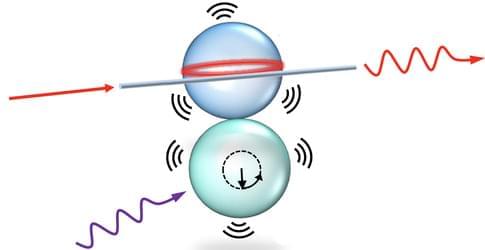A pair of microspheres can convert microwave signals over a wide frequency range into optical signals, which will be essential for future quantum technologies.
Future quantum communication systems will likely use microwaves to transfer information into and out of storage and processing devices but will use lasers to carry information from point to point within an extended network. Now researchers have demonstrated an improved method for converting microwaves to visible light signals by exploiting the way that electromagnetic waves can set up vibrations within microspheres [1]. Two microspheres in contact—one sensitive to microwaves and the other sensitive to optical signals—serve as the core of the converter. The work should give researchers a wider range of technological options as they develop advanced communications and computing networks.
Researchers are pursuing a variety of ways to store quantum information, or “qubits,” in microscopic, typically superconducting, structures. One common feature of such technologies is that reading or writing information relies on interactions with microwaves rather than on higher-frequency visible or infrared light from lasers. But lasers offer the best way to move information around, so extended networks of such devices will need ways to convert signals from one form to the other.
